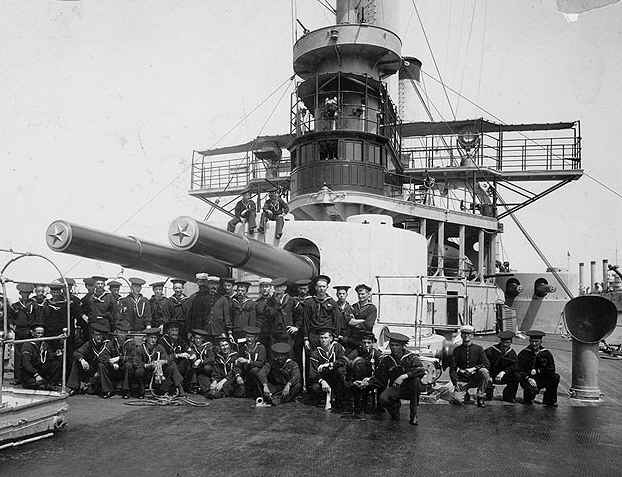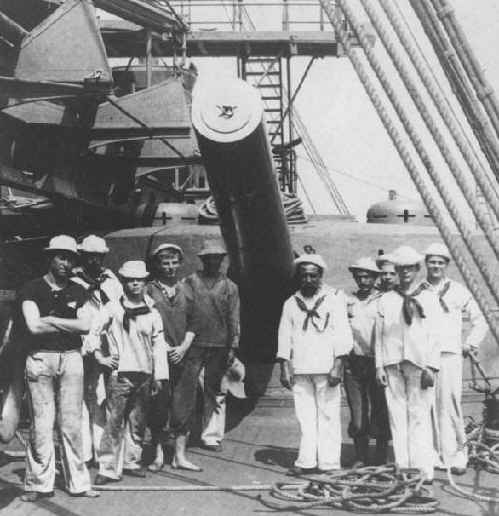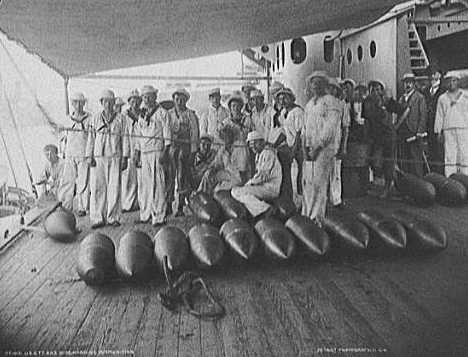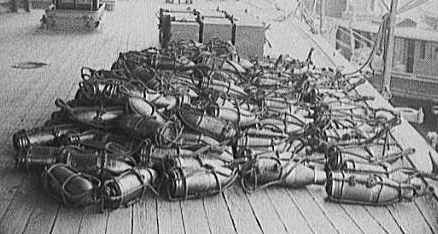|
The Mark 1 was fitted to the Second-Class Battleship Texas and some monitors, the very similar Mark 2 was fitted to the USS Iowa B-4. In 1908 AP projectiles were fitted with a more streamlined ballistic cap of 7crh which improved their long-range penetration ability. Background note: The propellants used for most of the 19th century burned very quickly, giving the projectiles a short, sharp kick. The longer the barrel the slower the muzzle velocity due to friction after the propellant had already finished combustion. That is why heavy guns of this era had such short barrels, some only 20 calibers long. The late 1800s saw the development of brown, or cocoa, powder which burned more slowly, but wasted much of its energy producing thick smoke. This propellant allowed longer, higher muzzle velocity weapons to be developed. The Mark 1 consisted of A tube, jacket, ten hoops and a locking ring, all constructed of gun steel. The Mark 2 was similar, but I lack construction details. |

Battleship Iowa B-4 in 1898
|

12"/35 (30.5 cm) gun on Second-class Battleship
Texas
|

Unloading projectiles on Texas
|

Unloading 12" (30.5 cm) shells from Texas
|